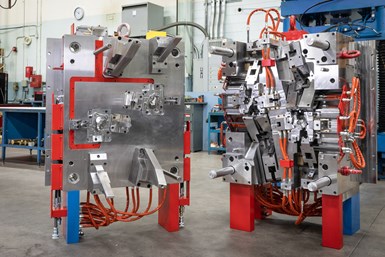Popular Posts: November 2019
We’ve compiled the data, and here are the top five MoldMaking Technology blog posts from the month of November.
You carved up the Thanksgiving turkey, you’ve gotten some great Black Friday deals and now you have all this free time before Cyber Monday shopping. So what do you do?
Why, you catch up on your favorite MoldMaking Technology articles! We’ve compiled the data, and below are the top five blog posts from the month of November. These are the most viewed articles from readers like you, so don’t miss out on what everyone else is reading. Take a look and learn some more about what’s going on in the moldmaking community.
K Show Report: Next Level Efficiency and Control

After my week in Dusseldorf Germany attending the “World’s No. 1 Trade Fair for Plastics and Rubber” along with more than 200,000 other visitors from 165 countries, I walked away with plenty of information, contacts, leads and ideas. However, the most important takeaway was that plastic continues to be an essential and innovative material to consumers, brand owners and manufacturers … and that includes mold builders.
With that being said, a prevalent tagline across the walls and backdrops of many booths was circular economy–meaning an economic system aimed at eliminating waste and the continual use of resources. At first, I wasn’t so sure what this had to do with my little neck of the plastics woods (moldmaking), but after several discussions, it became clear. Recycling, sustainability and waste reduction are not just OEM and molding facility concerns, challenges and opportunities, they impact the mold manufacturer as well.
To read the whole article, click here.
How to Correctly Size a Hydraulic Cylinder
In order to correctly size a hydraulic cylinder on a mold, follow these steps.
1.Train the mold designer to understand the potential maximum plastics pressures, so he/she can accurately calculate the plastics pressures that the cavity surface area will have on the component. Many will look only at pack/hold pressures, when peak plastics pressures must be considered. Also, do not solely base it off the material being used, as there are factors that can drastically impact pressures. If you are unsure then round it up. Note, if you want a robust tool and process then do not ever round it down. Once you have determined the maximum plastics pressures, the rest is easy.
To read the whole article, click here.
Don’t miss out on more content from MMT. Check out our Blog, updated with new posts every day!
Read Next
How to Use Strategic Planning Tools, Data to Manage the Human Side of Business
Q&A with Marion Wells, MMT EAB member and founder of Human Asset Management.
Read MoreHow to Use Continuing Education to Remain Competitive in Moldmaking
Continued training helps moldmakers make tooling decisions and properly use the latest cutting tool to efficiently machine high-quality molds.
Read MoreAre You a Moldmaker Considering 3D Printing? Consider the 3D Printing Workshop at NPE2024
Presentations will cover 3D printing for mold tooling, material innovation, product development, bridge production and full-scale, high-volume additive manufacturing.
Read More


















